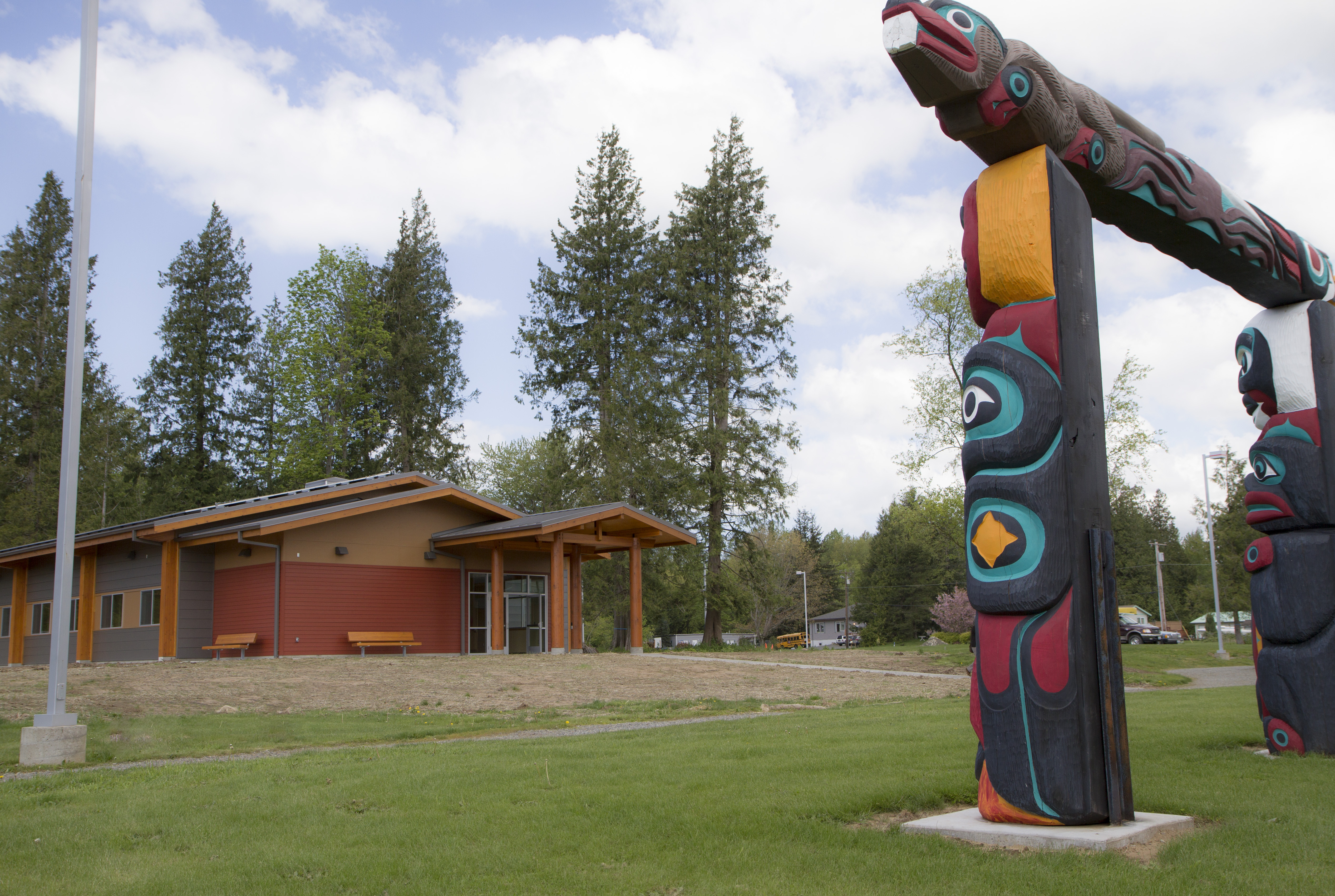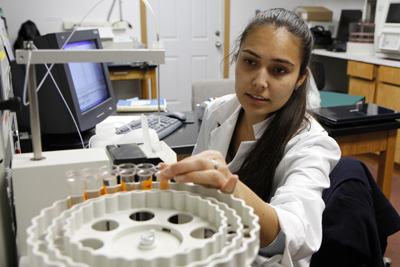
The Salish Sea Research Center will be fully operational by July 1
– Northwest Indian College
This summer, Northwest Indian College (NWIC) will open a new $2.2 million building on its main Lummi Reservation campus that will take science research capabilities at the college to new heights. With the new building, students and faculty will be able to conduct environmental research that supports healthy, clean, and vibrant environments that sustain tribal people.
The new 4,200-square-foot building was aptly named the Salish Sea Research Center. The Salish Sea has sustained tribes along its coast for centuries, and now research at NWIC will help support the health of the Salish Sea’s waters and shorelines.
“While the name of the center contains ‘Salish Sea,’ we are by no means exclusively marine focused. We are also laying the groundwork for an outdoor teaching and research program for native plants on campus,” said Dr. Marco Hatch, Associate Director of the National Indian Center for Marine Environmental Research and Education (NICMERE), which is located on NWIC’s campus.
The facility will support research in all programs of study – particularly the college’s Bachelor of Science in Native Environmental Science program. It increases opportunities for hands-on research giving students the experience needed to succeed in the workplace and in graduate school. It also helps foster partnerships with federal, state and tribal organizations.
“The Salish Sea Research Center provides our students the opportunity to work with faculty to engage in research projects and develop their science and technical skills,” NWIC President Justin Guillory said. “Of course, the building itself is great, but the learning that will occur inside the building is where our mission as a tribal college comes alive. New buildings help us build more students.”
Research already planned for the facility includes an examination of Bellingham Bay nutrient and oxygen dynamics, which is going on its seventh field season this year – that project is being done in partnership with Western Washington University and Washington State University’s Whatcom County Extension. Also, in partnership with the U.S. Environmental Protection Agency, the National Oceanic and Atmospheric Association and Lummi Natural Resources, NWIC researchers have begun a project examining the dynamics of red tides.
“Because of the increased capacity of this center, we are able to work with Northwest Fisheries Science Center and Friday Harbor Laboratories to study the relationship between the loss of eelgrass and increased harmful algal blooms,” Hatch said. “The center has already resulted in a leading expert in eelgrass planning to come to the college and spend a quarter here co-teaching a course on eelgrass and working with the students.”
The building includes five main laboratories a biology room, a wet lab, a live lab, an ecology room, and an analytical chemistry room.
“We also have a dedicated room for microscopes to sort samples and count phytoplankton,” Hatch said. “And I know everyone is excited about the mud room, so now we don’t have to drag the muck and mire from the intertidal through our offices.”
In addition to environmental research, another focus of the center’s research will be on the history of human interaction with Salish Sea lands and waters.
“People have always been here, and in this center we ask what lessons can be learned about how they promoted sustainability, about how they interacted with this place in a respectful manner,” Hatch said. “One example of this work is the partnership with the Heiltsuk First Nation looking at the ecological impacts of a traditional form of aquaculture called clam gardens.”
The Salish Sea Research Center was funded by a generous grant from the National Science Foundation and by NWIC’s $44 million capital campaign. The campaign has led to significant growth at NWIC in recent years. Since it began in 2005, eight new buildings have been constructed on the college’s main campus alone and two more buildings will open within a year as a result of campaign contributions. All of that physical growth supports the college’s evolution as a bachelor degree granting institution.
“I want to acknowledge the Kwina Family for providing the land to grow the NWIC campus,” President Guillory said. “This new building would not be possible without the land to build upon.”
A grand opening was held for the Salish Sea Research Center April 30 and the facility should be fully operational – with all necessary equipment – by July 1, according to Hatch.

In addition to projects already underway at the facility, the following research is planned for the building:
Eelgrass student research: project partners are Friday Harbor Laboratory, University of Washington, and Washington State University Extension San Juan County
Eelgrass and reduced harmful algal blooms: project partners areNorthwest Fisheries Science Center, Friday Harbor Laboratory, University of Washington, and Washington State University Extension San Juan County
NOAA / ESP remote harmful algal bloom monitoring: partners areLummi Natural Resources, and Northwest Fishery Science Center
Olympia Oyster larval study: project partners are Samish Indian Nation, University of Washington-Tacoma, Puget Sound Restoration Fund, and the Washington Department of Fish and Wildlife
Telling the Story of the Land, Revitalizing Traditional Plant Knowledge and Harvest with a View toward Sustainability: project partner isWashington State University Extension
Northwest Indian College is an accredited, tribally chartered institution headquartered on the Lummi Reservation at 2522 Kwina Road in Bellingham Wash., 98226, and can be reached by phone at (866) 676-2772 or by email at info@nwic.edu. We have seven Pacific Northwest locations and offer a variety of bachelor’s and associate degrees.
